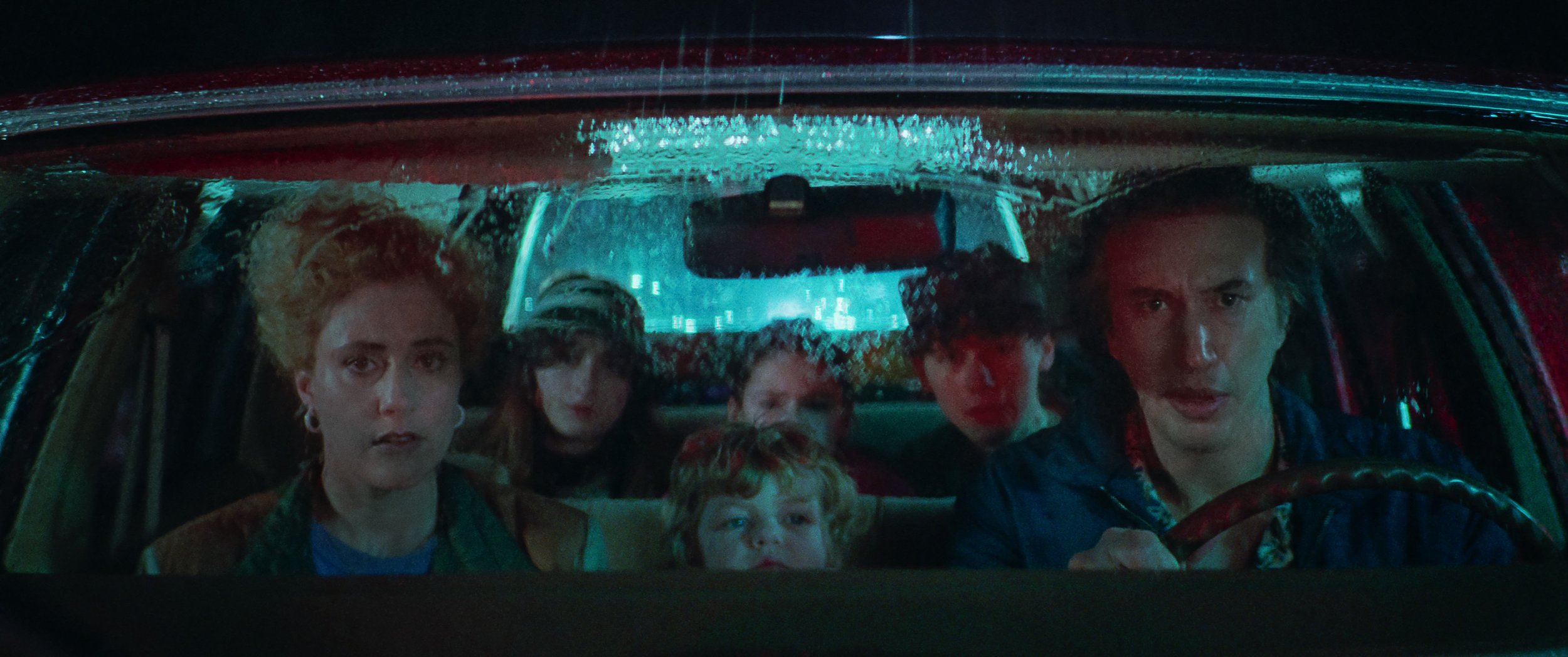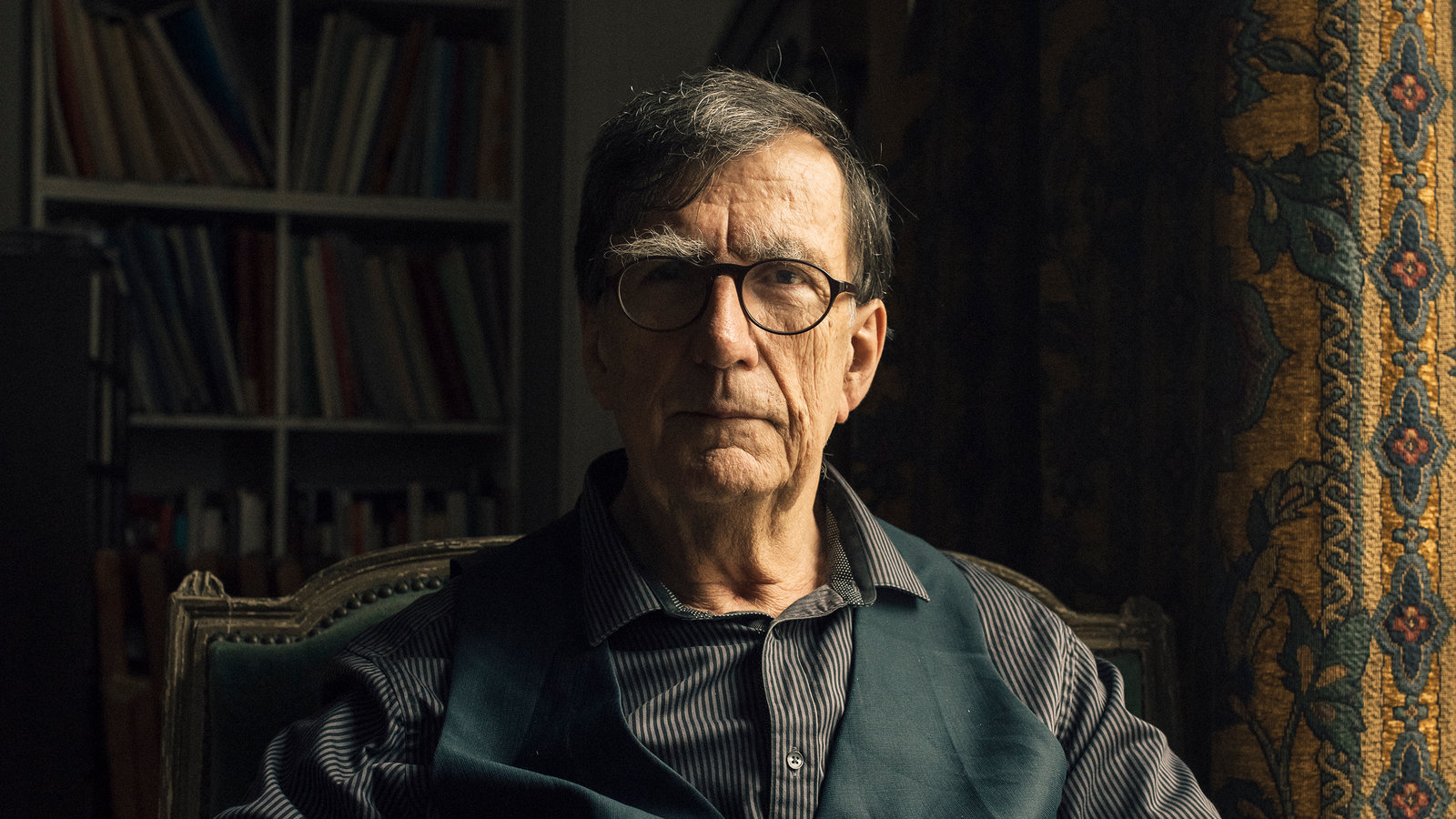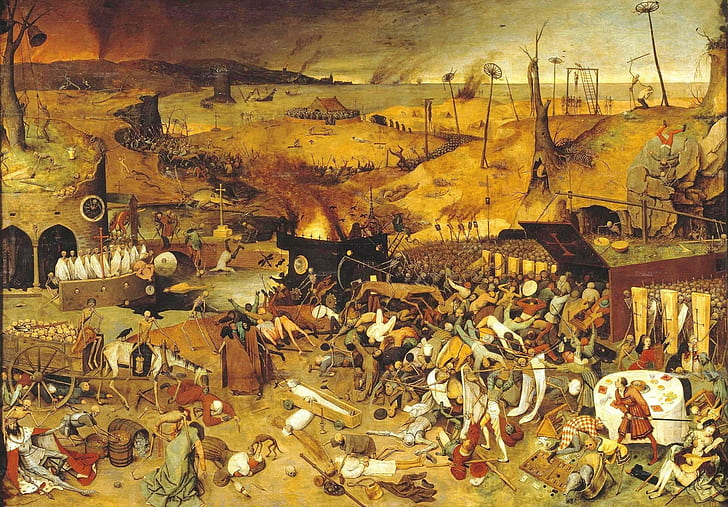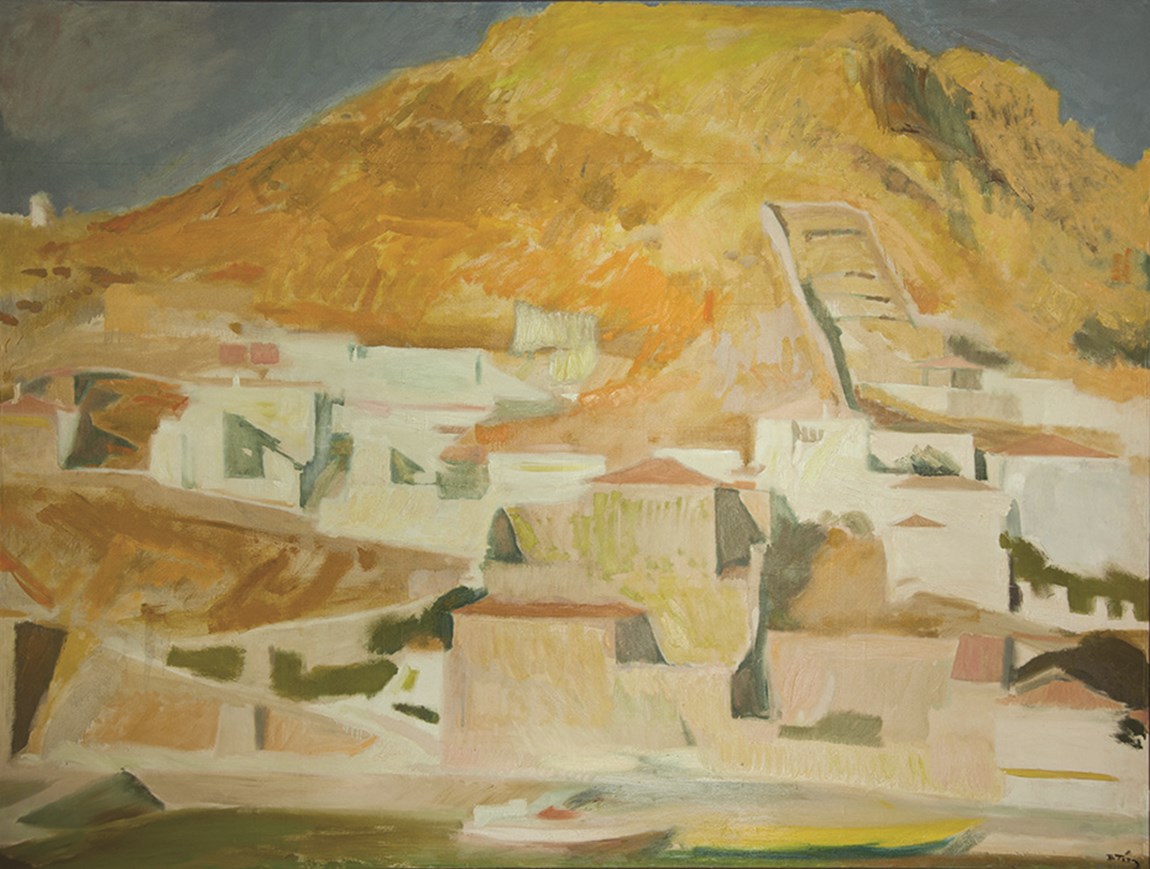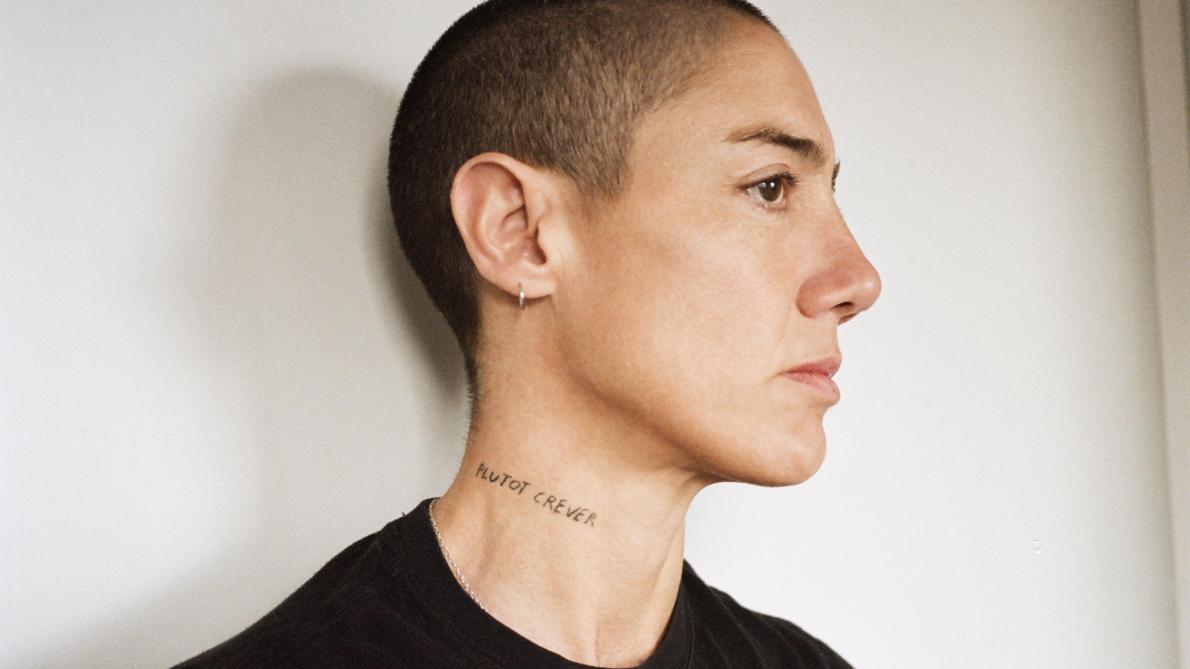White Noise seems to represent a departure from a writer-director who, while not exactly stuck in his ways, has made it clear over the past quarter century that he knows what he’s about. Until now, the work of Noah Baumbach has been low-key and often lo-fi, and based on original screenplays. The characters, either lifelong New Yorkers, Californians resident in New York, or adoptive New Yorkers back in California, are aspiring writers (Kicking and Screaming, Mr Jealousy, Mistress America), established novelists (The Squid and the Whale, Margot at the Wedding), ex-musicians (Greenberg), dancers (Frances Ha), documentary-makers (While We’re Young), sculptors (The Meyerowitz Stories), and collaborators in an experimental theatre troupe (Marriage Story). Reference-points and checkpoints include virtually every major museum and university in Manhattan and Brooklyn, plus the New Yorker, the nouvelle vague, the MacArthur Fellowship, Paul Ricoeur, Kafka, and Lionel Trilling.
In the new film, a faithful, full-dress rendering of Don Delillo’s novel, the trappings are different. The film begins in autumn 1984. Adam Driver, looking more than ever like a man wearing a mask of his own face, plays Jack Gladney, fiftyish and pot-bellied, who lives in a small Midwestern town, Blacksmith, with his wife Babette (Greta Gerwig), and four children, three of them from former marriages. The Gladney clan commune over television, engage with fads, read tabloid newspapers, eat frozen food, and enjoy giddy outings to the lavishly stocked local supermarket. They are products of that ‘triumphant, suffocating American philistinism’, that Philip Roth, in a 1989 essay, said it had been the duty of the post-war writer, armed with his Trilling and Kafka – or, to borrow Roth’s own preferences, his Kazin and Conrad – to defy.
Even Jack’s career, as a teacher of Advanced Nazism at the private College-on-the-Hill, reflects his populist credentials. Regarded as ‘shrewd’ where his colleagues are routinely labelled ‘brilliant’, Jack approaches his subject the same way as his buddies from the cultural-studies department, as a phenomenon in the history of mass taste. In a memorably choreographed sequence, Jack delivers a tag-team lecture with his perennially awestruck colleague Murray Siskind (Don Cheadle) that turns on the kinship between their respective specialisms, Adolf Hitler and Elvis Presley, a pair of mothers’ boys who found relief from psychic burden in seducing a crowd. Jack is less a successor to embittered, much-divorced professor-fathers like Bernard Berkman the experimental fiction writer in The Squid and the Whale (Jeff Daniels) or Harold the overlooked sculptor in The Meyerowitz Stories (Dustin Hoffman), than to the supporting roles that Driver, acting his true age (b. 1983) and tapping the obnoxiousness in his persona, has performed for Baumbach: Zev the rich-kid playboy ‘artist’ in Frances Ha, Jamie the scheming wannabe film-maker in While We’re Young, Randy the pampered actor in The Meyerowitz Stories.
But Bernard and Harold were not heroic figures – nor, for that matter, was Josh Srebnick (Ben Stiller), the hyper-conscientious documentarian whom Jamie exploits for professional advancement. Baumbach has always been clear-eyed about the pitfalls of purity, and open to the virtues of a breezier or jockier outlook. Ivan, the tennis instructor who addresses his eleven-year-old student as ‘my brother’ in The Squid and the Whale, transcends Bernard’s charge that he’s a ‘philistine’, just as Patch, the Goldman Sachs banker ridiculed for using the greeting ‘sup, bra!’ in Frances Ha, proves a devoted partner to Frances’s best friend Sophie. Even Josh’s disgust with Jamie in While We’re Young is revealed as excessive (‘he’s not evil’, he concludes, in the final scene. ‘He’s just young.’)
This is a not a case of Baumbach consorting with the enemy, but of cultivating a part of his personality that he has so far under-explored. Baumbach grew up on Montgomery Place, in the Park Slope district of Brooklyn. His father, a notable experimental novelist, wrote for Partisan Review, identified as one of the forces for good in Philip Roth’s essay. Towards the end of The Squid and the Whale, Bernard, a version of Jonathan Baumbach, remembers going to see A Bout de Souffle at an arthouse cinema, The Thalia, with ‘the Dicksteins’, an allusion to Morris Dickstein, the historian and PR stalwart. But while Baumbach has preferred to depict bohemian types with delicate antennae, there have been hints of a mixed pedigree ever since his 1995 debut Kicking and Screaming, in which a group of friends, postponing life after graduation, natter about topics ranging from Immanuel Kant to Jason Voorhees, the killer from the Friday the 13th series.
Baumbach has expressed his regret at failing to honour his father, the basis for Bernard, as ‘a great movie companion’ who ‘wouldn’t diminish The Jerk’. He also omits to present Walt (Jesse Eisenberg), the character modelled on himself, as the kind of kid who would eagerly consume a Steve Martin comedy. White Noise, in the attention, even indulgence, it shows towards the Gladneys, is a reminder that Baumbach is an unresentful creature of the 1980s, with a taste for popular entertainment – ET, Beverly Hills Cop, National Lampoon’s Vacation series – as well as for those films, more self-conscious in approach and sinister in energy, which Fredric Jameson identified as contributions to the analysis of postmodern themes: De Palma’s Blow Out, Demme’s Something Wild, Lynch’s Blue Velvet. (In a piece from 1984, shortly before the appearance of White Noise, Jameson described Delillo as ‘the most interesting and talented of American post-modernist novelists.’)
Baumbach’s attitudes are underpinned not by the disdain of Roth or the New York Intellectuals but something closer to the eclecticism favoured by Woody Allen, a fellow Brooklynite and secular Jew, who, in one strain of his work, has been keen to announce and also embody his love for both Groucho Marx and Ingmar Bergman along with an aversion to taking either too far. Baumbach’s films to date resemble Allen in this middle range, with a shared priority of sympathetic but unillusioned character-drawing in a clearly defined milieu. Both directors have made use of voiceover, inter-titles, location shooting, black and white, NY-LA rivalry, the actor Wallace Shawn. Frances Ha borrows a joke from Annie Hall, While We’re Young pays homage to Crimes and Misdemeanours, another story of a political documentarian in a world besotted with cheap thrills. But Baumbach is no disciple or tribute act, and his films are distinctive achievements – trenchantly funny, affecting, resourceful, heaving with memorable characters.
White Noise offers something less personal – if not quite generic, then genre-bound. It’s like a turbo-charged version of While We’re Young, Baumbach’s previous attempt at a commercial venture – in that case a polished comedy of manners, in this one a period satire with noir and disaster-movie elements. The tone of the new film is at first too goofy, then too pulpy. Delillo’s ornery chatter proves hard to play, though Cheadle and Gerwig fare better than Driver, and the novel’s mysticism is largely sacrificed. Like While We’re Young, the result belongs in the Interesting Failures section of the Video Planet where the put-upon Shep gets a job in Kicking and Screaming. But here, as there, Baumbach uses a smoother-edged approach to explore the thematic concern that has driven all of his work – the relationship between contentment and fear, in particular the fear of change.
With some exceptions, Baumbach’s work to date has traced an arc that parallels his own, with stories of people in their early twenties, early thirties, early forties, and more recently, depictions of divorce, challenges related to fertility and child-rearing, problems with lumbar discs and bones and joints (‘arthritis arthritis?’), marital breakdown, ‘estate planning’. The new film is the first he has made in which the protagonist is paterfamilias, and never a sibling, son, or son-in-law. The quandary is no longer who to be, but how to tolerate threats to a cherished and fragile status quo. Following a collision between a lorry and a freight train which releases chemical waste, the Gladneys vacate their home and pile into the station wagon. On the way to a safe zone, Jack gets out of the car for petrol, and is exposed to toxic rain for two and a half minutes. When he asks a government official if he is going to die, he is told that Nyodene D. will live in his system for thirty years. What Jack discovers, as a newly concrete fact, is that he is ‘tentatively scheduled to die’.
This is not his first intimation of mortality. He sees negative portents everywhere. His pillow talk with Babette concerns which of them will die first. (Little wonder that, in a sequence invented by Baumbach, he suffers night terrors.) His response is to dwell on little moments, embrace the ‘aimless days’. In his intermittent voiceover, he urges, ‘Do not advance the action according to a plan’. It’s the same temporal binarism that Jameson traced in The Antinomies of Realism – narrative progression vs the ‘eternal’ or ‘existential’ moment of bodily affect, with novelistic storytelling requiring both. As Jack tells his students, ‘All plots move deathward’. It doesn’t matter how much he enjoys putting out the rubbish, delights in Birds Eye chicken, or fetishizes his wife’s ‘important hair’ (a bouncy blonde perm).
In its portrayal of negative thinking, Delillo’s novel provides a suitable fit – more than, say, the books that Baumbach’s characters have owned, like Gravity’s Rainbow and Rabbit is Rich, or the subject of his previous adaptation, Jonathan Franzen’s The Corrections (an abortive HBO pilot). Babette takes an experimental drug, Dylar, to deal with her fear of death, which is Josh’s preoccupation at the ayahuasca ceremony in While We’re Young. Babette is informed that while ‘everyone’ is afraid of dying, she fears it ‘right up front’, as Lester in Mr Jealousy is told that he’s just expressing ‘more deeply’ the universal propensity towards envy. Lester’s girlfriend in Mr Jealousy suggests that he is jealous of himself; the Dylar dealer (Lars Eidinger) says, ‘I envied myself’. And Baumbach shares with Delillo an interest in the power of adjectives, as a reflection of neurosis and tool of aggression – words such as ‘difficult’, ‘good-looking’, ‘minor’, ‘painful’, ‘loud’, ‘weird’. In The Squid and the Whale, Walt breaks up with his girlfriend because ‘I thought I could do better’. ‘Better how?’ his mother wonders. ‘I don’t know.’ In White Noise, one of the Gladney children asks whether the winter is harsh or mild. To the reply ‘Compared to what?’ she answers, ‘I don’t know.’
Baumbach has added some highly characteristic details that would not have appeared out of place in Delillo’s novel. There’s a startling moment during the evacuation sequence when the camera closes in on the eleven-year-old Steffie as she calls, ‘We’re late’. Jack urges his children not to care about the behaviour of people in ‘other cars’. In an emergency scenario, acting a certain way carries a Darwinian dimension. But everyday existence also brings a profound awareness of standards derived from elsewhere, or greener grass tantalisingly nearby, a hovering shadow of the not-quite-realised or out-of-reach. Whereas the characters in Allen’s work are given a choice between two more or less philosophical approaches, inherited norms (‘some abstract vision of love’, ‘all these standard, accepted clichés of love’) versus situation-specific flexibility (‘whatever works’ – a phrase used in three of his films), Baumbach presents a harsher struggle, the effort to forge an authentic self amid an array of collective pressures. His characters are terrified of being, in a phrase he employed about his father’s literary career, ‘out of phase’. There’s an overwhelming feeling that, as Frances says of her plan to read Proust on a – two-day – trip to Paris, ‘it’s good to do what you’re supposed to do when you’re supposed to do it’. (A detail in draft scripts, about Patch’s expertise in ‘currency stability’, was changed to ‘anticipating inflection points’.)
One would struggle to name a body of work in which age is more reliably noted and sweated over. A key influence on Frances Ha was The Shadow-Line, Conrad’s late novella about the end of ‘early youth’. (It also includes the line, ‘This is not a marriage story.’) Margot’s sister, in Margot at the Wedding, raises the idea of getting a flat in Williamsburg and is told: ‘it’s only young people’. When Roger, in Greenberg, tells his ex-girlfriend, ‘I’m really trying do nothing for a while’, she replies, ‘That’s brave, at our age’. (He is about to turn forty-one.) While We’re Young opens with five screens’-worth of quotation from Wallace Shawn’s version of Ibsen’s The Master Builder, about a prominent architect who fears ‘young people’. The theme of physical decay has provided the occasion for a number of sub-Wildean reflections: ‘Getting old is terrible. I don’t care how universal it is’; ‘It’s weird, ageing – right? It’s like, what the hell is going on?’; ‘What the fuck is happening to us?’
But like most of the stories that Baumbach’s characters tell themselves, it is jostled and relativized. A wise sixteen-year-old in Kicking and Screaming explains that getting older is ‘not a disease’. There’s a short speech at the end of The Meyerowitz Stories, delivered with beautiful understatement by Rebecca Miller, in which the daughter of a renowned sculptor gives Danny the reasons why Harold is wrong to feel that, at seventy-eight, his life has yet to begin. Florence, Roger’s love interest, finds his voluntary hiatus inspiring: ‘you don’t feel all that bullshit pressure to be successful. I mean, by other people’s standards’. Baumbach has talked of his connection to Eric Rohmer’s characters, who hold ‘fast to their ideas of themselves’ – ‘their own philosophy’ – in the face of ‘outside evidence that maybe they aren’t like this or shouldn’t be like that’. As Adam Phillips put in an essay on success, ideals should be seen as ‘affinities, not impositions’, things ‘we have chosen’ and not just been given by ‘our culture’. That’s a possibility that Baumbach’s films raises without endorsing. He may want to believe in it, but the social realm, present in a thousand particulars, works to impose a horizon of choice, even if it’s a wider horizon than his characters sometimes fear.
It’s a view that recalls the arguments of modern sociologists at odds with the determinism of their tradition – Stanley Cohen and Laurie Taylor, for example, who offered two conflicting endings to their 1976 book Escape Attempts, or Anthony Giddens, who sought to protect the idea of agency with his theory of ‘structuration’, a borrowing from French intended to denote an ongoing process, the social structure as both the ‘medium’ and ‘outcome’ of actions taken in a self-reflexive spirit. Again, Delillo offers a fruitful outlet, being something close to Giddens in novelist garb. They were born in the second half of the 1930s, and published their first book in 1971; The Constitution of Society, the outline of structuration, and White Noise, Delillo’s first – one might say only – exercise in social portraiture, were published within three months of each other; and their work in the period since has been concerned with the fate of intimacy, the prospects for the good life in a world dominated by finance capitalism, terrorism, technology, and impending doom. But if Delillo allows Baumbach to explore sociological questions, he also serves to expose his soft centre.
Baumbach is older than Delillo was when White Noise appeared, and the world in which he is writing is surely more benighted, but the version he has produced is cheerful, even carefree. The implication of its protracted end-credit dance sequence – in the midst of death we are in life – is hard to miss, or to square with Delillo’s minatory final lines about the awful potency of tabloid newspapers, as a stage or catalyst for the collective death drive. Instead, the crowd is affirmed as a source of energy and companionship. Jack wears dark glasses to hide from reality, and at certain points, Baumbach may be seen as a kindred spirit. His films tend to employ the same dramatic formula – a series of episodes built on frustration and confusion, culminating in a crushing low-point or cathartic showdown, and then a tentatively happy ending, with the worst-case scenario being a temporary farewell or lesson learned. While We’re Young was the closest he has come to delivering a culpable deus ex machina – literally, baby-from-adoption-agency – but the unforeseen way through has a habit of materialising. After a period of adjustment, following the breakdown of one’s parents’ marriage or one’s own, a depressive episode, a professional setback, a falling out, there is every reason to live.
In his essay ‘Worrying and its Discontents’, Adam Phillips argued that worrying is an ‘ironic form of hope’ – it is ‘a way of looking forward to things… a conscious conviction that a future exists’, but also to one in which ‘something terrible’ will happen. Death exists in Baumbach’s work, as presiding fear or proximate reality, but has so far afflicted just one character who appears on screen – and a minor one at that. When Jack says that ‘out of a persistent sense of large-scale ruin, we keep inventing hope’, Delillo invites us to hear the element of denial, whereas Baumbach, who closes his adaptation with a variant of that line, presents the desire to carry on not as blue-sky thinking but spiritual resilience. (Then everybody dances.) Delillo’s novel might have yielded a film of greater ambition, or at least one more embracing of various kinds of bad news. But perhaps the feeling of disappointment can itself be transformed, via a kind of Baumbach-like logic, into an enticing prospect, of fresh worlds ripe for conquest, the realms of human and social experience that this director has yet to explore.
Read on: Paul Coates, ‘Pynchon’s Aesthetic Radicalism’, NLR I/60.
